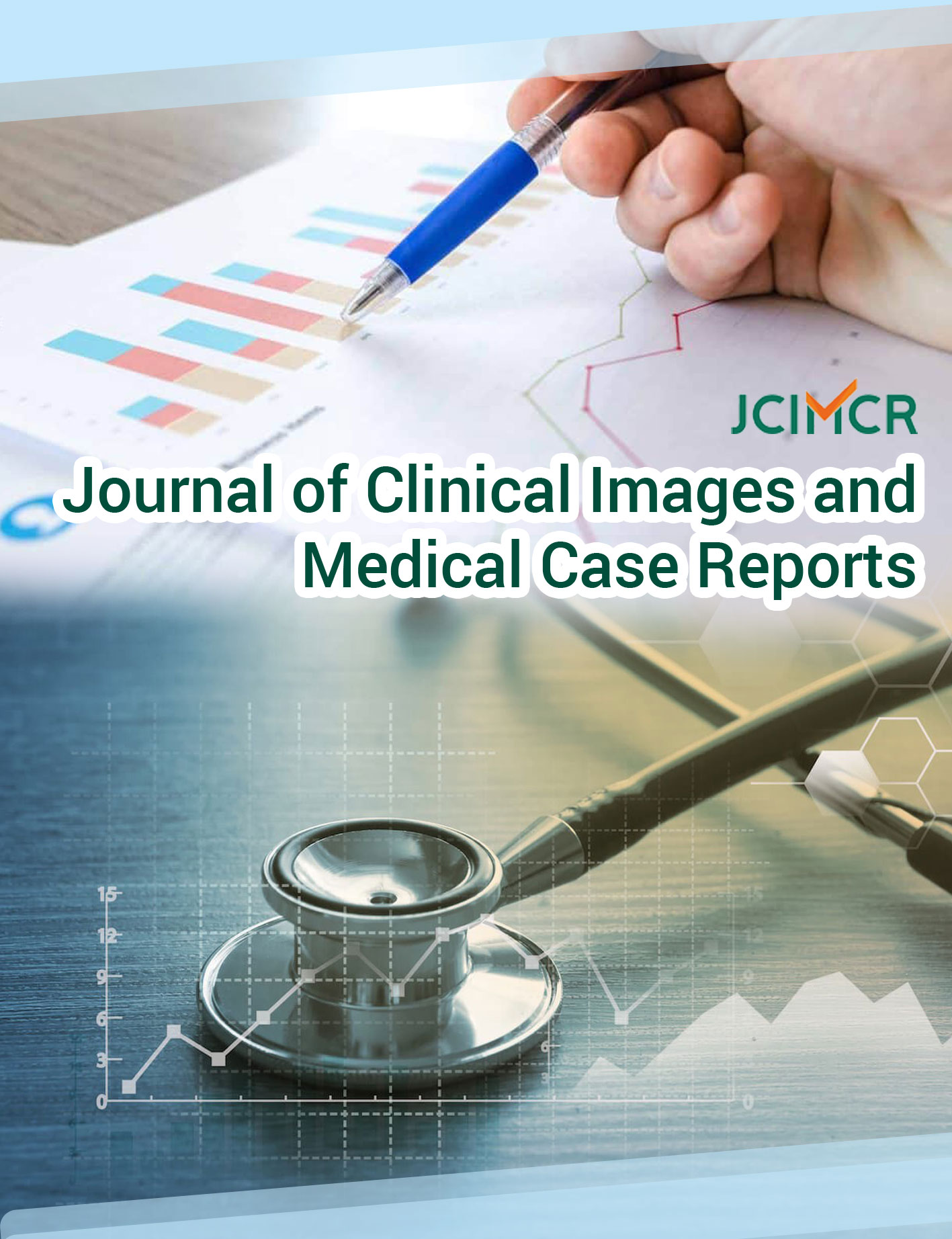
Journal of Clinical Images and Medical Case Reports
ISSN 2766-7820
Clinical Image - Open Access, Volume 5
Clinical image report of patient with non-signet gastric adenocarcinoma presented with MAHA
*Corresponding Author : Khaled Aboujabal
Department of Internal Medicine, Hamad Medical
Corporation, Qatar.
Email: kaboujabal@hamad.qa
Received : Sep 25, 2024
Accepted : Oct 18, 2024
Published : Oct 25, 2024
Archived : www.jcimcr.org
Copyright : © Aboujabal K (2024).
Abstract
Gastric Adenocarcinoma is the fifth most common malignant tumor worldwide. The presenting symptoms are usually related to the local invasion or distant metastasis. Here we are reporting peripheral smear image of a patient who was found to have peripheral blood schistcytosis on presentation and diagnosed of having gastric adenocarcinoma.
Key message: To alert physician and pathologist that metastatic cancer including gastric malignancy can give Microangiopathic Hemolytic Anemia (MAHA) like picture with shisto-cytosis in peripheral smear and should be included in differential diagnosis when encountering such presentation.
Citation: Aboujabal K. Clinical image report of patient with non-signet gastric adenocarcinoma presented with MAHA. J Clin Images Med Case Rep. 2024; 5(10): 3312.
Case presentation
A 41-year-old Asian lady presented with a 10-day history of diffuse lower abdominal pain, shortness of breath, bone pain, and easy bruising. She also reported 6 kg of unintentional weight loss during the last 2 months. She denied fever, early satiety, dyspepsia, or dysphagia. She is a non-smoker and does not consume alcohol. She denied any family history of malignancy or bleeding disorders. Her examination was unremarkable except for lower abdominal tenderness and multiple ecchymoses. Laboratory work-up revealed a normal renal function test. However, CBC revealed a hemoglobin of 12.1 g/dL and a platelet count of 32,000/uL. Further workup revealed a reticulocyte count of 127,000/uL, a lactate dehydrogenase level greater than 1800 U/L, and mildly elevated liver enzymes (total bilirubin of 24 umol/L, alkaline phosphatase 110 U/L, ALT 210 U/L, and AST 302 U/L). A peripheral smear (Figures 1 and 2) revealed normochromic normocytic anemia with reticulocytotic and prominent schistocytes (1.5%). With marked thrombocytopenia and a few large, glint-like forms. She was initially treated as a case of thrombotic thrombopenic purpura and underwent two sessions of plasma exchange without improvement. The computed tomography scan of the abdomen revealed multiple enlarged abdominal and retroperitoneal lymph nodes with mildly enhanced smooth wall thickening of the proximal stomach involving the lesser curvature. Multiple well circumscribed punched out lytic lesions of varying sizes were seen diffusely involving the spine and bony pelvis. A positron emission tomography scan confirmed the findings. A bone marrow biopsy revealed extensive infiltration with sheets and clusters of malignant non-hemopoietic cells, composed of pleomorphic cells with prominent nucleoli and a glandular pattern. Gastroscopy revealed diffuse gastric thickening, and a biopsy was obtained. Histopathology revealed poorly differentiated diffuse metastatic gastric adenocarcinoma with no signet cells. IHC studies were positive for CK AE1/AE3 and HER-2, 3+. She was diagnosed with metastatic gastric adenocarcinoma and started chemotherapy.
Discussion
Gastric adenocarcinoma is the fifth most common malignant tumor. It usually presents with weight loss, vague epigastric pain, dysphagia, and occult GI bleeding and tends to metastasize to the liver, peritoneal surfaces, and distal lymph nodes. It is rare for gastric adenocarcinoma to initially present with MAHA and bone marrow infiltration. While signet cell adenocarcinoma and other mucin-producing carcinomas have been reported to cause MAHA [1], there have been very few reports of non-signet ring cell gastric carcinoma initially presenting with MAHA. A review by Elliot et al. reported that almost 5.6% of patients who were presumed to have TTP and treated with PE were later found to have cancer-related MAHA. The pathogenesis of carcinoma-induced MAHA is not properly understood yet [2]. However, it has been proposed that it could be due to tumor infiltration and endothelial damage due to disseminated carcinomatosis [3]. It is especially important for clinicians and pathologists that advanced tumors such as gastric adenocarcinoma be considered as a differential diagnosis in patients presenting with MAHA, especially when it is not responsive to plasma exchange therapy.
References
- Lam R, Tarangelo N, Wang R, Horibe M, Grimshaw AA, et al. Microangiopathic hemolytic anemia is a late and fatal complication of gastric signet ring cell carcinoma: A systematic review and case-control study. The Oncologist. 2022; 27(9): 751-759. doi:10.1093/oncolo/oyac093.
- Elliott MA, Letendre L, Gastineau DA, Winters JL, Pruthi RK, et al. Cancer-associated microangiopathic hemolytic anemia with thrombocytopenia: An important diagnostic consideration. European Journal of Haematology. 2010. doi:10.1111/ j.16000609.2010.01448x.
- Kaidar-Person O, Nasrallah H, Haim N, Dann EJ, Bar-Sela G. Disseminated Carcinoma Diagnosed by Bone Marrow Biopsy in Patients with Microangiopathic Hemolytic Anemia and Thrombocytopenia: A Report of Two Cases with Gastric Cancer and a Review of the Literature. Journal of Gastrointestinal Cancer. 2010; 42(3): 123-126. doi:10.1007/s12029-0109204-6.
